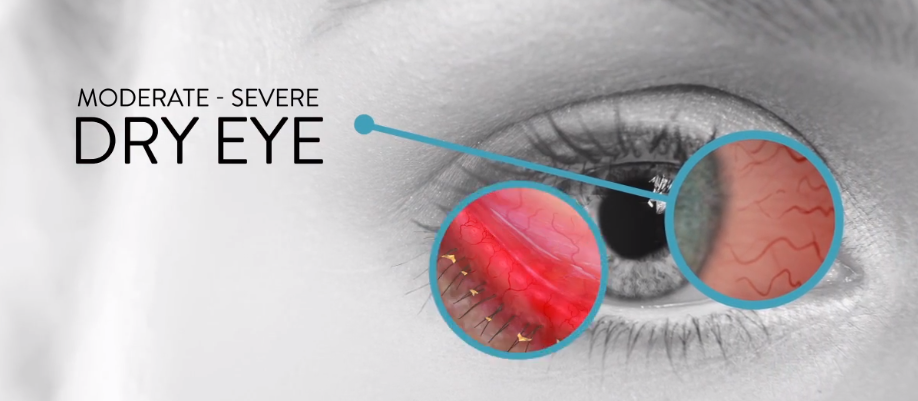What if there was a way to better serve your patients, inspire positive interactions with self-paying patients, increase referrals, and grow your practice with little to no effort on your part? It may sound like a too-good-to-be-true marketing scam, but in fact this has been the actual experience of a growing number of eye care practices that have developed a dry eye specialty.
Once dismissed as a nuisance by doctors, dry eye is now the fastest-growing condition in eye health, affecting as much as half the U.S. population. Your practice can’t afford not to consider dry eye any longer. Here’s why.
How dry eye drives referrals
In a previous post, we discussed the growing number of patients suffering from dry eye – many of whom don’t even know there’s a name for their symptoms, let alone effective treatment options. Because dry eye sufferers might spend years going from doctor to doctor having their symptoms missed or misdiagnosed, they are actively looking for specialists who can help them once and for all. And once they find you—let’s just say patient retention is not a problem.
“These patients have bounced around for a long time, so when they finally find a practice that can truly help them, they bring everybody,” says optometrist Paul Karpecki, Director of the Advanced Dry Eye Center at the Kentucky Eye Institute in Lexington and a pioneer in dry eye treatment for the past 20 years. He estimates a whopping 90 percent of his patients are referrals.
Adding dry eye patients involves very little marketing effort, Dr. Marguerite McDonald, MD, FACS, said in Ophthalmology Times. “Technicians can wear buttons that say, ‘ask me about dry eye,’ or one-page flyers announcing the dry eye center can be tucked into the invoices that are mailed to patients’ homes,” she suggests. “It’s very low cost marketing. It’ll be fairly easy to bring in 1,500 more of these patients to the average practice.”
And it’s not just patients who are referring to practices that specialize in dry eye, it’s other providers as well. “I’d say 60 to 70 percent are referrals from colleagues, and it’s not uncommon for optometrists to refer to optometrists,” says Karpecki. Other referrals come from ophthalmologists, rheumatologists, and endocrinologists, he says. “About 5 percent of patients come in from all over the country on their own, but it’s much more of a referral-based practice.”
The cost and ROI of dry eye
With all the money you’re saving on marketing, you can afford to invest in some of the advanced technologies that are now available to diagnose and treat dry eye. Although it’s not a must right off the bat, if you are serious about building a dry eye center it helps considerably.
Karpecki likens it to glaucoma management. “When we first started getting into it, we didn’t have OCTs. We relied on really knowing how to look at the optic nerve, analyzing the visual fields, corneal thickness, multiple intraocular pressure measurements, which pretty much everyone had access to, and we did pretty well in the management of these patients. Then later with OCT, hysteresis measurements, VEP etc. we became much more confident in our diagnosis and management.”
Similarly, every eye doctor already has what they need to begin treating dry eye: a slit lamp, something to express meibomian glands (“even just a wet Q-tip”), and a dye such as lissamine or fluorescein, he notes. “But if this is going to be a big part of your practice, then just like with glaucoma, you’ll need to invest in more advanced technologies. You can get much further when you start involving more sensitive tests.”
McDonald recommends that budding dry eye practices begin with tear osmolarity testing. Not only is it the most accurate way to diagnose dry eye according to the American Academy of Ophthalmology, but there is no capital investment required. “The [tear osmolarity] test units are installed at no charge, and one must only commit to buying a certain number of test cards,” writes McDonald. Once the technicians are comfortable with tear osmolarity, she suggested practices could then look into adding more diagnostic tools to expand the dry eye center, such as the Keratograph 5M (Oculus) or LipiView/LipiScan (TearScience).
Another thing to consider is that with the exception of the medical eye exam itself and point-of-care tests, dry eye services are generally not covered by insurance. This means more self-pay patients and less payer paperwork and hassles. Furthermore, the return on investment on dry eye technologies can be significant. Karpecki cites a procedure involving the insertion of amniotic membrane used in advanced dry eye patients, such as PROKERA, that reimburses over $1,400, while the cost of the device is about $700 to $900.
Additional benefits for doctors
Having spent decades educating his colleagues about dry eye, Karpecki believes there’s a significant group of doctors who, like him, aren’t motivated primarily by the revenue opportunities but by the challenge. They are energized by figuring it out and being able to reach an underserved, ever-growing patient population.
There’s more information on dry eye than ever before, and the diagnostic technologies are improving all the time. “Some things I do today I didn’t do routinely a decade ago, like meibomian gland expression, or even 3-4 years ago like understanding the conditions that mimic dry eye but are something other. There’s so much more we’ve learned, and it’s starting to make a difference,” says Karpecki.
He estimates that in the past ten years as diagnoses and treatments have improved, his patient satisfaction rates have shot up from about 50 percent to now well over 90 percent. And his own satisfaction has increased as well. “Working at a dry eye center of excellence really tests all your skills as an optometrist, not just your ocular surface expertise, which I think is really exciting and rewarding.”
For best practices in dry eye patient education, be sure to download our eBook, Building Your Dry Eye Center of Excellence—7 Keys to Success

